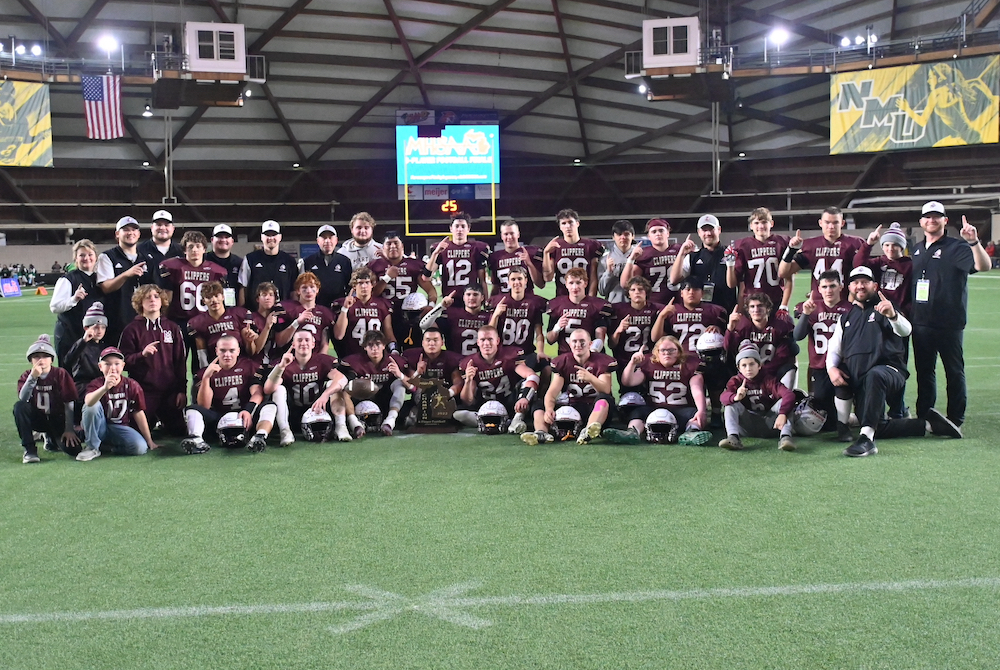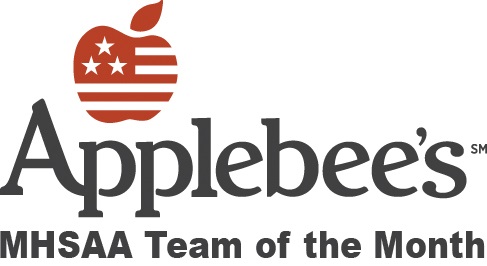
Talking Practice: Texas, Illinois Revise Policies
December 20, 2013
By Rob Kaminski
MHSAA benchmarks editor
Coaches and players in Texas and Illinois adapted to new football practice limitations this fall, with the Texas policy focusing on contact, and the Illinois regulation emphasizing length of preseason practices.
Following are the main changes those states put in place heading into the 2013-14 season:
The University Interscholastic League, which governs school sports in Texas, put into writing that, “During the regular season and postseason, no football player is allowed to participate in more than ninety (90) minutes of full contact practice per week,” effective with the first day of practice this fall.
The complete policy follows:
For the purposes of the of rule, "full contact" is defined as football drills or live game simulations where "live action" occurs. Live action, as defined by USA Football, is contact at game speed where players execute full tackles at a competitive pace taking players to the ground. A team may continue to dress in full pads for practice, but may only participate in live action drills and game time simulations no more than ninety minutes per athlete per week. It is assumed that when players are in shells (shorts, shoulder pads, and helmets) no live action drills or simulations will occur. This rule is intended to limit live action drills and simulations and not the number of practices a team may participate in full pads. A team may participate in "air," "bags," "wrap," and "thud" drills and simulations at any point. These contact levels are defined below:
• Air - Players should run unopposed without bags or any opposition
• Bags - activity is executed against a bag, shield or pad to allow for a soft-contact surface, with or without the resistance of a teammate or coach standing behind the bag.
• Wrap - Drills run at full speed until contact, which is above the waist with the players remaining on their feet.
• Thud - Same as wrap but tempo is competitive with no pre-determined winner and the players are not tackling to the ground.
 The rule came to the UIL Legislative Council as a recommendation from the UIL Medical Advisory Committee, a permanent advisory committee to the Legislative Council which meets twice each year to discuss and review safety policies for UIL participants. The committee, which is made up of leading medical professionals in various specialties and includes representatives from the Texas High School Coaches Association, the Texas Girls Coaches Association, and the Texas State Athletic Trainer Association, unanimously recommended this limitation in full-contact football practice.
The rule came to the UIL Legislative Council as a recommendation from the UIL Medical Advisory Committee, a permanent advisory committee to the Legislative Council which meets twice each year to discuss and review safety policies for UIL participants. The committee, which is made up of leading medical professionals in various specialties and includes representatives from the Texas High School Coaches Association, the Texas Girls Coaches Association, and the Texas State Athletic Trainer Association, unanimously recommended this limitation in full-contact football practice.
The rule formulates into a formal policy the existing actions of the majority of coaches across Texas, and most coaches have had to make few adjustments, if any. In fact, according to a story on statesman.com, the proposal caused more of an uproar on social media than from coaches.
“It’s not going to affect us in anyway,” Vandegrift HS coach Drew Sanders said in the story. “Most good coaches were way below that 90-minute amount already. Prior to legislation we still monitored it ourselves – the only change is now we have to keep up a log more publicly.”
Illinois put standards in place for its first 14 days of football practices, known as the state’s Preseason Football Acclimatization Practice Period. At the core of the policy is a three-hour practice limit for the first five days, during which teams can also conduct a one-hour walk-through.
 Teams must observe a minimum two hours rest between the practices and walk-throughs. Players may wear helmets only on the first two days, then helmets and shoulder pads for the next three. From days seven through 14 of the acclimatization period, schools may practice for a maximum of five hours per day, as long as that day is followed by a three-hour day, or an off day. During the five-hour days, no session can last more than three hours and must include a two-hour break between practices. Full pads may be worn for the final seven dates leading up to the first contest.
Teams must observe a minimum two hours rest between the practices and walk-throughs. Players may wear helmets only on the first two days, then helmets and shoulder pads for the next three. From days seven through 14 of the acclimatization period, schools may practice for a maximum of five hours per day, as long as that day is followed by a three-hour day, or an off day. During the five-hour days, no session can last more than three hours and must include a two-hour break between practices. Full pads may be worn for the final seven dates leading up to the first contest.
“This policy was the result of a collaborative effort between the IHSA Sports Medicine Advisory Committee and the Football Advisory Committee,” said SMAC committee member and University of Illinois Associate Professor of Orthopedic Surgery Dr. Preston M. Wolin. “The guidelines are based on the most recent scientific evidence, as well as the expertise of the coaches who will help implement them. Both committees believe the guidelines represent a significant positive contribution to the health of our athletes.”
“This new policy undoubtedly changes the way we, as coaches, approach preseason practice,” said Metamora HS coach Pat Ryan, who is a member of the FAC and a past President of the Illinois High School Football Coaches Association. “Coaches have to get more creative with when and how they schedule practices, as well what they do with their time. The proposals were strongly supported by both committees. It is a crucial final step to the process of being able to effectively prepare our teams in a safe manner. Change is always difficult, but the game is changing and we need to adapt to continue to put the safety of our players first.”
The IHSA offered multiple interactive online webinar meetings for high school coaches leading up to the start of practice where questions were answered, along with further clarifications on the policy and the science behind it.
“I think most coaches understood that changes were on the horizon,” said IHSA Executive Director Marty Hickman. “We wanted to be in a position to give our coaches as much information as possible to make sure they are comfortable with the new policy. Their input will be critical moving forward as we develop educational materials, like a best practices presentation. I commend our committees on a policy that is supported by medical experts, football coaches and school administrators.”

Team of the Month: Martin Football
By
Geoff Kimmerly
MHSAA.com senior editor
December 13, 2022
Two straight trips to 8-Player Semifinals
 Two seasons over the last three with double-digit wins.
Two seasons over the last three with double-digit wins.
Three straight seasons where the only loss on the field came in the playoffs to the eventual Division 1 champion.
Martin’s football team had come so close a few times to earning the ultimate prize in Michigan high school football. And finally, this fall, it was the Clippers’ turn.
Paced by 11 seniors, the MHSAA/Applebee’s “Team of the Month” for November claimed the 8-Player Division 1 championship at the Superior Dome in Marquette – the Clippers’ first Finals title since 1987 – with a 74-24 win over previously-undefeated Merrill.
“This is the most seniors we’ve ever had, as long as I’ve been coaching here,” said Martin coach Brad Blauvelt, a 2003 graduate of the school who just finished his fifth season leading the program after serving as an assistant coach nearly as long before taking over. “Program kids – from rocket football to middle school, all the way up, they’ve been committed to the program the whole time.”
Martin has an interesting recent history as a program, to say the least. After five straight winning seasons from 2003-07, the Clippers didn’t win a game from 2008-2013. They got back on the plus side at 6-4 in 2018, then made the move to 8-player – where they’ve gone a combined 40-6 over the last four seasons.
This one started with a 30-28 win over Mendon – the eventual 8-Player Division 2 runner-up – and over 13 games Martin averaged 54 points while giving up only 14.5. There were a pair of losses along the way – to Grand Rapids NorthPointe Christian and Bridgman, which both finished 9-0 but have enrollments too high to qualify for the 8-Player Playoffs. Those losses helped Martin move forward, especially the 35-34 defeat against Bridgman in the regular-season finale.
“The biggest thing was being OK with a loss, because we were so used to winning … not being OK with it, just understanding we’ll get better from it,” Blauvelt said.
The Bees were able to get their playmakers outside on the Clippers – which generally means big plays in the 8-player format. So Martin’s coaches made a sharp adjustment heading into the postseason, putting all-state safety Sam Jager at one outside linebacker, and moving middle linebacker (and all-state quarterback) JR Hildebrand outside on the other side.
So while Hildebrand was able to continue leading the offense to totals of 68, 56, 42 and 74 points over the four playoff games, the Clippers during the playoffs gave up just 52 points total – and held a two-time reigning champion Adrian Lenawee Christian team averaging 48 points per game to just 14 in a 59-14 Regional Final win.
The Cougars had eliminated Martin from the playoffs the last two Semifinals on the way to those two straight Division 1 championships. In 2019, Martin lost to Colon in a Regional Final, and the Magi went on to claim the Division 1 title.
“The last couple of years, we lost the last game of the season, and you can’t do anything about it,” Blauvelt said. “Losing in-season, we were able to fix and change some things around that I think ultimately helped us.”
Hildebrand was one of the state’s best at his position this fall, rushing for 1,340 yards and 23 touchdowns and throwing for 1,234 yards and 25 scores. He owns two school records on offense, and also led the team with 90 tackles, to go with four sacks and seven more tackles for loss.
Jager caught seven of those touchdown passes and was the best blocker for a team that ran for more than 2,600 yards. He had 51 tackles and five interceptions, including one he brought back for a score. Another senior, Karter Ribble, topped 300 yards rushing and receiving, with a combined 12 touchdowns, plus scored twice on kickoffs and again on a punt return. He also made 90 percent of his extra-point tries and set a school record with a 43-yard field goal.
They were part of that senior class that, although graduating, has helped bring a buzz and momentum that Blauvelt hopes carries over into other sports, academics and the community as a whole.
“They come to morning workouts, they come to all the summer stuff, and they do the extra work to push themselves over the hump,” Blauvelt said. “They’re so talented athletically too, that doing that pushed them over the top even more so.”
Past Teams of the Month, 2022-23
October: Gladwin volleyball - Report
September: Negaunee girls tennis - Report

